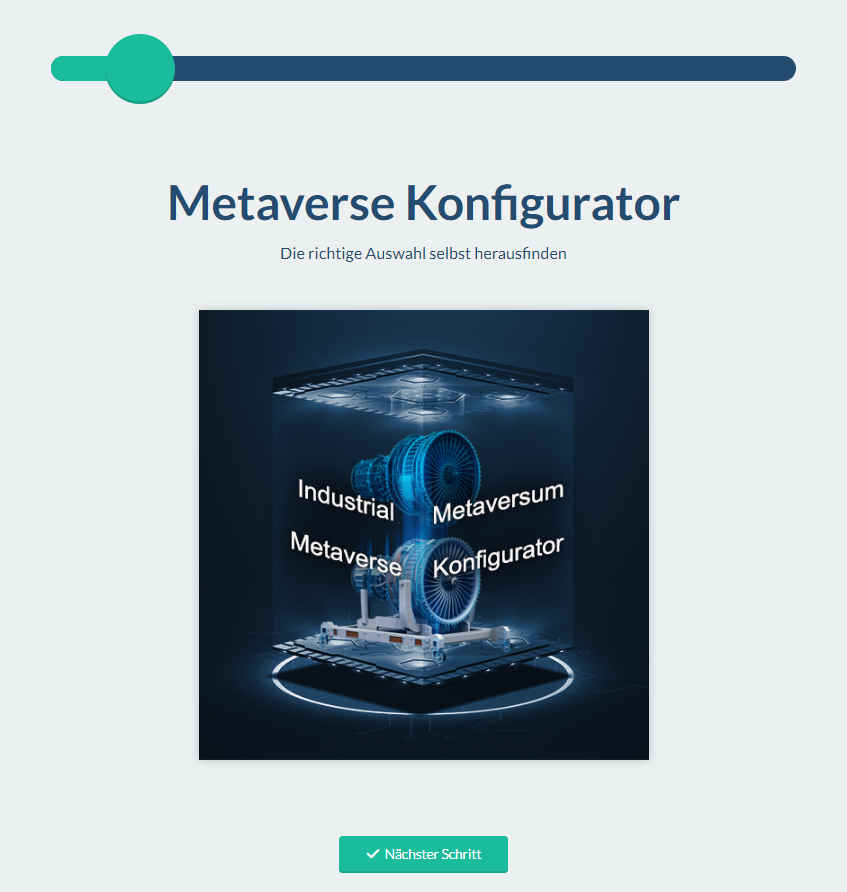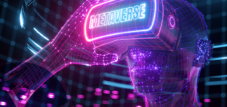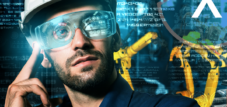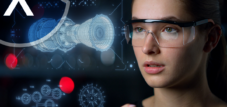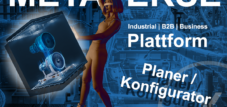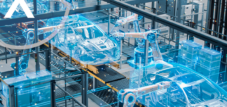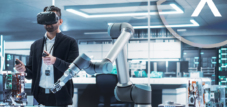German Industrial Metaverse – Is German leadership coming in industry and mechanical engineering? With 5G network, matrix code and others?
Language selection 📢
Published on: October 6, 2023 / update from: October 6, 2023 - Author: Konrad Wolfenstein
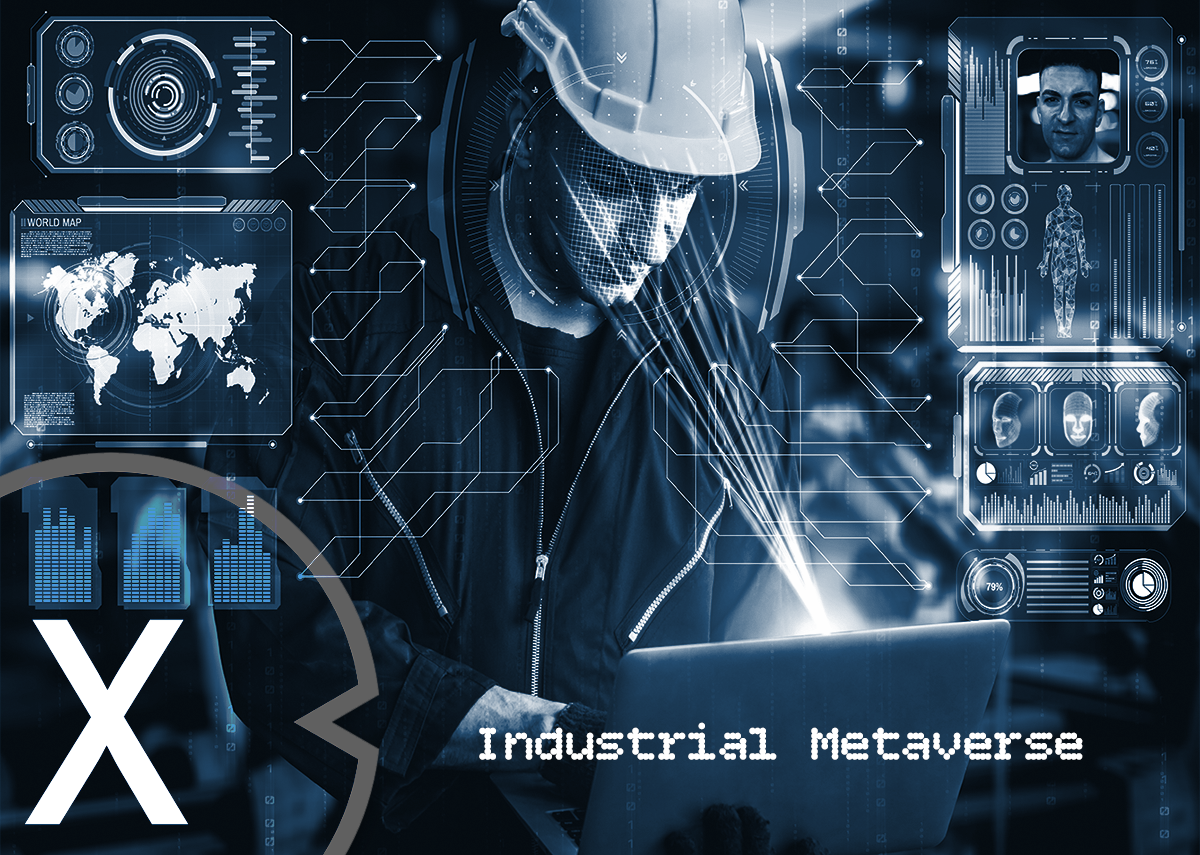
German Industrial Metaverse – Is German leadership coming in industry and mechanical engineering? – Image: Xpert.Digital
🏭 German Industrial Metaverse: The Rise to the Top?
🛠️ Siemens and the billion dollar project
Germany is making visible progress in the industrial metaverse, and companies like Siemens are investing massive amounts of capital into the market. Siemens is planning a campus that will establish itself as a central hub for the industrial metaverse. This is a key part of a billion-dollar investment that will have significance for the German economy far beyond Siemens. The campus is intended to serve as an incubator for new technologies and a testing ground for innovative concepts.
Suitable for:
📡 5G: The backbone of Industry 4.0
5G networks are crucial for the realization of Industry 4.0. These networks enable unprecedented speed and reliability, which is essential for the functioning of the industrial metaverse. Not only fast data transfer, but also real-time communication and low latencies are key factors. In this regard, Germany is becoming one of the world's leading players thanks to the rapid expansion of the 5G infrastructure.
🤖 Artificial intelligence: blessing and challenge
The integration of AI into the industrial metaverse is one of the biggest challenges on the way to implementation. Artificial intelligence can help automate processes, but can also be used for complex analyzes and predictions. But deployment is complex and requires multidisciplinary teams of engineers, data scientists and ethical experts.
🎯 Matrix Code: Another Key?
In addition to 5G and AI, the matrix code should not be overlooked. It enables easy and quick identification of products and machines. This can be particularly advantageous in logistical processes and significantly increase efficiency in the industrial sector.
🌍 Global competition and the German position
Even if Germany is well positioned, one should not lose sight of global competition. Countries such as the USA, China and South Korea are also investing heavily in technologies related to the industrial metaverse. However, thanks to its strong industry and highly qualified workforce, Germany is in a good position to take on a leading role worldwide.
📣 Similar topics
- 🏭 German Industry: A look into the future of the Metaverse
- 📡 5G and Industry 4.0: A perfect symbiosis?
- 🤖 AI in industry: More than just a buzzword
- 🎯 Matrix Code: The Underrated Technology?
- 🌍 Global competition in the industrial metaverse
- 💡 Innovation drivers in the industrial metaverse
- 🤝 Cooperations in the industrial sector: Who is at the top?
- 🚀 Technological Advances: What Comes After the Metaverse?
- 🧠 Skilled labor shortage: Does it threaten German leadership in the metaverse?
- 💰 Investing in the future: Where does the money go?
#️⃣ Hashtags: #GermanIndustrialMetaverse #5GundIndustrie #ArtificialIntelligence #Matrixcode #GlobalCompetition
🗒️ Xpert.Digital: A pioneer in the field of extended and augmented reality
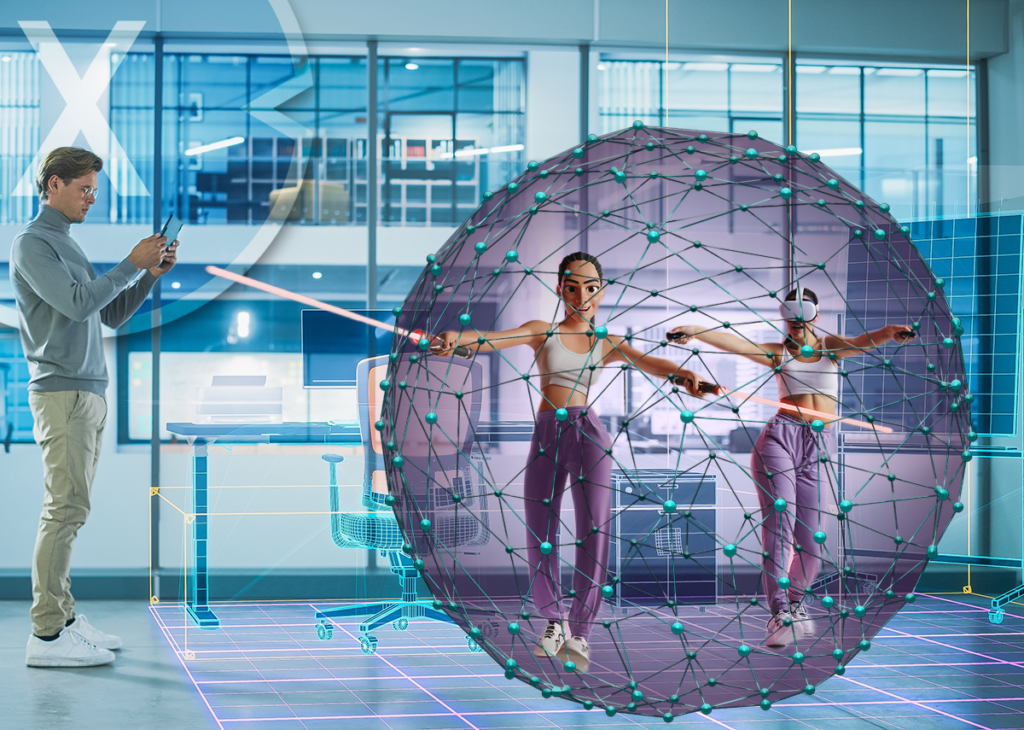
Find the right Metaverse agency and planning office such as a consulting firm - Image: Xpert.Digital
🗒️ Find the right Metaverse agency and planning office such as a consulting firm - search and search for top ten tips for consulting & planning
In the age of digitalization, where technologies such as Extended Reality (XR) and the Metaverse are constantly becoming more relevant, Xpert.Digital positions itself as an opinion leader and pioneer. With over 1,500 specialist articles, Xpert.Digital has established itself as a central point of contact for the industry.
🌌 Extended Reality (XR): The best of both worlds
Extended Reality is a collective term that includes virtual reality (VR), mixed reality (MR) and augmented reality (AR). Xpert.Digital is committed to creating immersive XR experiences that are both informative and entertaining.
- Interactive Experiences: XR allows users to immerse themselves in virtual worlds and interact with their surroundings in ways previously unimaginable.
- Education and Training: XR can be used for educational purposes to convey complex topics and concepts in an understandable and tangible way.
- Entertainment: Whether games, films or art – XR opens new horizons in digital entertainment.
🔮 Augmented Reality (AR): See the world through digital eyes
Augmented Reality, a particular focus of Xpert.Digital, makes it possible to integrate digital information or graphics into the real world. The possibilities are nearly unlimited.
- Marketing and Advertising: AR can be used to create interactive advertising campaigns that engage customers in a whole new way.
- Everyday help: From navigation apps that project the route directly onto the street to furniture apps that show what a new sofa would look like in the living room - AR makes it possible.
🌐 The Metaverse: The Next Big Thing
The Metaverse is a virtual world where people can interact through avatars and create shared experiences. Xpert.Digital recognizes the enormous potential of the Metaverse and is working to translate this potential into usable products and services.
- Social Interaction: The Metaverse offers the opportunity to connect with people from all over the world and share common experiences.
- Economy and trade: Virtual goods and services can be traded in the metaverse, which opens up completely new business models and sources of income.
- Creative Freedom: From building your own worlds to designing custom avatars, the Metaverse is a place of endless creative possibilities.
🚀 Xpert.Digital at the forefront of innovation
Xpert.Digital shows how a company can be at the forefront of the technological revolution. With their focus on XR, AR and the Metaverse, they are well positioned to shape and define the future of digital interaction.
More about it here:
🌐 The Roadmap for Germany: A Guide for the Metaverse Industry
The vision of making Germany a leading nation in the Industrial Metaverse is an ambitious undertaking that requires a comprehensive, integrated strategy. This strategy should not only cover the technological aspects, but also take into account economic, social and legal issues. It is important to recognize and utilize the potential of Metaverse technology without being held back by excessive regulations.
📜 The regulatory framework
Although regulations are necessary to ensure security and data protection standards, an excessive regulatory framework should be avoided. This is particularly true for extended reality (XR) technologies, which can create legal gray areas in areas such as employee data protection and remote working from abroad. This does not mean that these issues should be neglected; Rather, there is a need for clear guidelines that promote innovation while protecting user privacy and security.
🔗 Interoperability and standards
A key component to the success of the Metaverse are standards and norms that ensure interoperability between different platforms and applications. All stakeholders, from industry to science to authorities, should come together to develop common standards. Without such standardization, we would risk ending up in fragmentation of the metaverse, which would significantly limit overall adoption.
🔬 Research and development
Another important element of the strategy is the promotion of research and development. This includes not only basic research in the area of simulation technology and immersive user experience, but also applied research in the areas of system and data security. Investments should also be made in the development of technologies for the visualization of 3D data and digital twins, which are important for many industrial applications in the metaverse.
🌐 Infrastructure
No Metaverse strategy would be complete without a solid plan for expanding digital infrastructure. It is important to consistently implement the federal government's ongoing gigabit strategy. This means in particular the rapid expansion of fiber optic networks and 5G/6G technologies, which not only have to guarantee high data transmission rates, but also the necessary security and reliability.
📚 Education and qualifications
An often overlooked aspect is the importance of training and further education. There must be a focus on training the next generations of developers, engineers, and other professionals who have the expertise to design and operate the Metaverse and related technologies.
💼 Economic incentives and ecosystem
In addition to the technological side, the economic dimension should not be ignored. Tax incentives for startups and established companies could further fuel development in the industrial metaverse. In addition, it would make sense to create an ecosystem of public and private partnerships to leverage synergies and accelerate the adoption of the technology.
🤝 Ethics and society
Last but not least, ethical and social issues must also be addressed as part of the metaverse strategy. This includes, for example, the safety and ethical use of AI as well as questions about the digital divide that could arise from the introduction of new technologies.
Overall, the Metaverse offers enormous potential for the German economy and society. In order to fully exploit this potential, a well-thought-out, comprehensive strategy is required that integrates all relevant aspects. This is the only way Germany can realize its vision and become a global leader in the Industrial Metaverse by 2030.
📣 Similar topics
1️⃣ German leadership in the Metaverse industry: reality or fiction?
2️⃣ Balancing act between regulation and innovation in the Industrial Metaverse
3️⃣ The role of Extended Reality (XR) in the German Metaverse
4️⃣ Standardization and interoperability: Key to Metaverse success
5️⃣ Research and development in the Industrial Metaverse: An overview
6️⃣ Digital infrastructure: The backbone of the German Metaverse
7️⃣ Education and qualifications: How we train the Metaverse developers of tomorrow
8️⃣ Tax incentives and the ecosystem in the Industrial Metaverse
9️⃣ Ethics and society: The hidden challenges of the Metaverse
🔟 Germany 2030: A global leader in the Industrial Metaverse?
#️⃣ Hashtags: #IndustrialMetaverse #GermanLeadership #DigitalInfrastructure #EthikImMetaverse #ResearchUndDevelopment
Our Industrial Metaverse configurator
Just try out our universally applicable (B2B/Business/Industrial) Metaverse configurator for all CAD / 3D demo options:
Xpert (B2B/Business/Industrial) Metaverse configurator for all CAD / 3D data can be used on all devices, one platform!
Suitable for:
🌐 The Industrial Metaverse and its importance for Industry 4.0
The concept of the Industrial Metaverse is still in its early stages, but the impact it could have on Industry 4.0 is immense. It is an extension of the already existing technological infrastructure, relying on virtual reality (VR), augmented reality (AR), sensors, real-time data and cloud computing. All of these technologies already exist, but integrating them into a coherent and functional metaverse presents us with numerous challenges.
🔧 Hardware challenges
First we need to look at the hardware issues. Current AR and VR devices are often expensive and have limited battery life, limiting their usability in industrial applications. In addition, the scalability of the technology is still under development. The ability to scale the system to large numbers of users and massive amounts of data is critical to the future viability of the Industrial Metaverse.
👩💻 Software developments
But it's not just about the hardware; The software also needs to evolve. We need robust algorithms and artificial intelligence capable of recognizing, predicting and controlling complex patterns. Another important aspect is latency, which should be as low as possible. Edge computing can play an important role here as it brings data processing closer to the data source, thereby minimizing delay.
🏭 The brownfield problem
Then there is the so-called “Brownfield” problem, the integration of existing systems and systems into the new meta verse. Many companies have already made considerable investments in their existing infrastructure. A successful industrial metaverse must be able to integrate seamlessly into these existing systems without the need for major revisions or investments.
🤝 User interaction and usability
The next challenge is user interaction. Engineers should be able to operate intuitively in the metaverse. This means that the interfaces and interaction models must be designed in such a way that they meet people's needs and not the other way around. Simple drag-and-drop user interfaces, voice recognition, and even haptic feedback systems could go in this direction.
🛡️ Safety aspects
Another important point is security. In a world that is becoming increasingly interconnected, the attack surfaces for cyberattacks are becoming ever larger. The Industrial Metaverse must have robust security protocols and encryption techniques to ensure data protection and secure operations.
🔗 Interoperability and ecosystem
In addition, the Industrial Metaverse should not be seen as an isolated solution. It needs to be part of a larger ecosystem that includes sensors, wearables, CAD/CAE software, web content, digital payment systems and other building blocks. Interoperability between these different elements is crucial to the success of such a system.
⚖️ Legal and ethical issues
Finally, the legal and ethical dimension should not be neglected. Who owns the data in the metaverse? How is user privacy guaranteed? These and other questions must be resolved before the Industrial Metaverse can begin full operations.
🚀 Conclusion and outlook
Overall, the Industrial Metaverse faces a variety of challenges that are both technical and organizational in nature. But the benefits it could offer – from increasing efficiency to reducing costs to improving quality and safety – are too tempting to ignore. It's an exciting time for everyone working at the intersection of technology and industry, and the next few years will certainly be crucial in determining the direction and success of this emerging concept.
📣 Similar topics
- 🌐 Introduction to the Industrial Metaverse: What is the Potential?
- 🔧 Technical challenges in the Industrial Metaverse: AR and VR in focus
- 👩💻 Software Innovations in the Metaverse: AI and Edge Computing
- 🏭 The brownfield dilemma: integration of existing systems
- 🤝 User Experience and Interaction: The Human Factor in the Metaverse
- 🛡️ Cybersecurity in the Industrial Metaverse: Protection against attacks
- 🔗 The Industrial Metaverse Ecosystem: Interoperability is Key
- ⚖️ Legal and ethical considerations in the Industrial Metaverse
- 🚀 Future of the Industrial Metaverse: What’s Next?
- 🌍 Industry 4.0 meets Metaverse: A symbiosis of technologies
#️⃣ Hashtags: #IndustrialMetaverse #Industrie4.0 #VirtualReality #AugmentedReality #Cybersecurity
🗒️ If you don't understand something or need advice, we also offer training and workshops
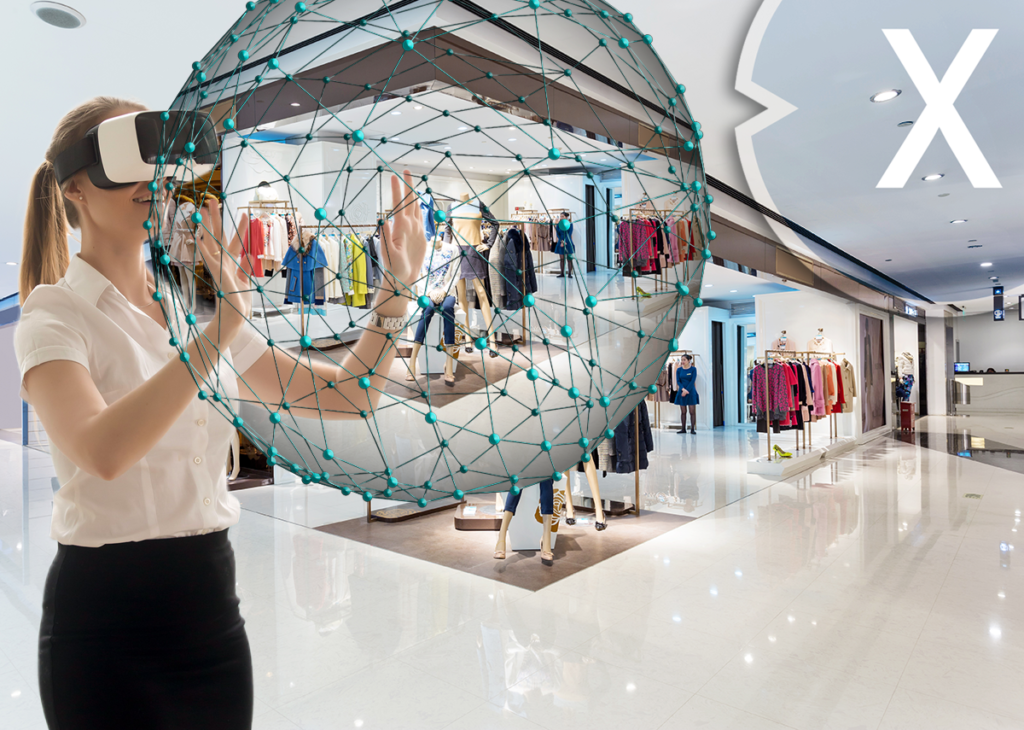
Metaverse & Extended Reality training, lecture or workshop for augmented, mixed and virtual reality – Xpert.Digital
In today's digital era, technology is evolving at a rapid pace. There are constantly new terms and technologies that need to be understood and mastered. If you're having trouble keeping up with topics like Metaverse, XR technologies, or immersive 3D, you're not alone.
More about it here:
🏭🌐 Industrial Metaverse: Best fundamentals and conditions in Germany and therefore enormous potential for the business location 🇩🇪
🛠️📈 Industrial Metaverse: Why Germany is an ideal location for exponential growth opportunities 📍
The industrial metaverse refers to a virtualization of the workplace and industrial processes that goes far beyond what we previously knew. This digital ecosystem offers excellent conditions for the German economy as it is built on the solid foundation of Industry 4.0, artificial intelligence (AI), virtual reality (VR), augmented reality (AR) and the Internet of Things (IoT). Germany has already made significant investments in these technologies and has a well-developed infrastructure that is crucial for the implementation of the industrial metaverse.
🎯🏢 Use cases of the Industrial Metaverse in various sectors 📊
1. 👨💻 Design and Engineering 📐
The Metaverse allows engineers and designers to run simulations in real time. In a collaborative mode, professionals at different locations can evaluate complex models and make improvements without having to be physically present. This not only saves travel costs, but also enables faster product development.
2. 🧪 Virtual testing and validation 🛡️
Another key advantage is the ability to test products in a virtual environment using synthetic data. For example, companies can conduct crash tests without having to destroy a physical model. This saves time and resources.
3. 🏭 Production 📦
In the industrial metaverse, the production environment can be simulated in advance. This allows companies to save costs because they are able to identify possible weak points early and adapt processes before actual production begins.
4. 🛠️ Operation and maintenance 📊
Visualizing workflows and data in a three-dimensional space enables better process management. Machines can be monitored remotely and serviced as needed, increasing efficiency and minimizing downtime.
5. 👨🏫 Education and training 📚
There are immense benefits to using the Metaverse for training purposes. Employees can be trained in dangerous or expensive scenarios, such as in the chemical industry, without taking any actual risks. This results in a better prepared workforce and increases overall workplace safety.
📈🌐 Potential for Germany as a business location 🇩🇪
Germany offers ideal conditions for the industrial metaverse. The country has already made significant progress in the area of digital transformation and is a global leader in the implementation of Industry 4.0 technologies. Since German companies have already invested in technologies such as AI, IoT, VR and AR, they can only benefit from the introduction of the industrial metaverse. They can work more efficiently, improve the quality of their products and ultimately increase their competitiveness.
The synergies between the industrial metaverse and existing technologies could usher in a renaissance of the German industrial sector. By cooperating with domestic providers of digital solutions, companies can accelerate their innovation cycles and thus further expand their competitive advantage.
📝💡 Final Thoughts 🌟
In conclusion, it can be stated that the industrial metaverse is not just a vision for the future, but also offers a realistic perspective for the German economy. The diverse use cases and the enormous potential for increasing efficiency make it a decisive factor for the long-term success of Germany as an industrial location.
📣 Similar topics
- 🏭 Industry 4.0 and the industrial metaverse: A symbiosis for Germany
- 🤖 AI and IoT as building blocks of the industrial metaverse
- 🛠️ Use cases: How the metaverse is changing design and engineering
- 🎮 VR and AR in the industrial metaverse: revolution or evolution?
- 🌐 The Internet of Things meets the industrial metaverse
- 🚗 Virtual testing and validation: The future of product development
- 💡 German innovative strength: Why the metaverse can thrive here
- 🎓 Education and training in the metaverse: safer, faster, more efficient
- 🔄 Digital transformation: The industrial metaverse as the next step
- 🇩🇪 Germany as a business location: The potential of the industrial metaverse
#️⃣ Hashtags: #IndustrialMetaverse #Industrie40 #DigitalTransformation #GermanEconomy #Usecases
🗒️ New territory for newbies: What you should know now about blockchain, tokens, NFTs, wallets, cryptocurrency and the metaverse
In today's digital world, terms such as blockchain, NFTs, wallets, cryptocurrencies and the metaverse have become increasingly present. For newcomers, these terms may seem confusing and complex at first. Here we try to explain these terms in an understandable way and give you important and interesting details about them.
More about it here:
🌐 The merging of the physical and digital worlds: The role of humans at the center of technological change
🔧 Technology in maintenance
AR is already being successfully used in industrial environments to improve machine maintenance and repair. For example, AR glasses automatically detect errors in the machine, while an AI system filters relevant work instructions and displays them directly in the technician's field of vision. This leads to a significant increase in efficiency and minimizes human errors.
📡 Remote repair and remote technician
Another exciting application example is remote maintenance. Smartphones with lidar sensors are used here, which create a 3D map of the surrounding area. This information allows an expert located elsewhere to provide instructions for repairs without being physically present.
🌌 Limits and possibilities
However, it is important to note that many of the technologies described as industrial meta-verse are actually only expanded reality or digital twin applications. A complete interaction in which people, component and machine work together in a so-called “human-in-the-loop” model is often not yet realized. This means that the actual potential in areas such as construction, maintenance, product tests as well as training and training is still largely unused.
🤔 **Ethics and data protection
Another aspect that should not be neglected is the question of ethics and data protection. The increasing networking of humans and machines raises numerous questions about data security and privacy that urgently need to be addressed as these technologies continue to develop.
🚀 Future developments
Looking to future developments, one could imagine a number of scenarios where augmented reality and AI come together to create fully integrated systems. These could bring revolutionary changes to healthcare, transportation and even entertainment.
💼 Economic importance
The economic importance of these technologies is enormous. Companies capable of developing efficient XR and AI systems could gain a significant competitive advantage. In addition, improving work processes could create numerous jobs in highly qualified areas.
🌍 Social aspects
At a societal level, technology can provide both opportunities and challenges. On the one hand, the use of XR and AI could overcome the boundaries of time and space, which could improve access to education and healthcare. On the other hand, there is a risk of social isolation if people drift too much into the virtual world.
🔑 Conclusion
In conclusion, we are only at the beginning of a technological revolution that has the potential to profoundly change both our working lives and our everyday lives. The key to success lies in the balanced integration of people into these new systems, where both technological and ethical aspects must be taken into account.
📣 Similar topics
- 🌐 The Industrial Metaverse: Where humans and machines merge
- 🛠️ AR technology in industry: increasing efficiency and minimizing errors
- 📱 Remote Repair and Remote Technicians: The Future of Maintenance
- 🚀 The potential of XR and AI: future scenarios
- 🤖 Ethics and data protection in human-machine interaction
- 💼 Economic significance of XR and AI: opportunities for companies
- 👥 Social impact of extended reality and AI
- 🌟 The revolution of human-machine integration
- 💡 Technological Evolution: From the Industrial Metaverse to Everyday Transformation
- 🌍 XR and AI: Connecting the physical and digital worlds
#️⃣ Hashtags: #IndustrialMetaverse #ARTechnology #RemoteRepair #XRundAI #EthicsandPrivacy #EconomicImportance #SocialImpacts #HumanMachineIntegration #TechnologicalEvolution #PhysicalandDigitalWorld
🛠️ The brownfield problem: The integration of existing systems and the challenges that come with it 🤖
In the modern business world, companies often struggle with a variety of technological challenges. One of the most complex tasks is the integration of existing systems, also known as a brownfield scenario. Brownfield systems are existing installations that need to be updated or integrated into a new ecosystem for a variety of reasons. These assets can contain both software and hardware components and range from legacy IT infrastructure to mechanical production facilities.
📚💡 Historical context 🕰️
The term “brownfield” has its origins in the real estate industry and refers to an area that has already been developed and now needs to be redeveloped or renovated. In the context of information technology, it includes the further development or integration of existing systems.
🚧 Challenges 🤔
🧩 1. Technological fragmentation 🔄
Technology is evolving rapidly, meaning new and improved solutions are available in a short period of time. Companies that don't continually invest often find themselves in an environment with highly fragmented technologies.
💰 2. Costs 📊
A complete renewal of the systems would usually not be financially viable. Brownfield projects therefore often have to make do with limited resources, which makes modernization difficult.
⚙️ 3. Compatibility 🔗
The different systems are often not compatible with each other. This requires customization, which can be expensive and time-consuming.
🛑 4. Business interruptions ⏳
Modernization often requires the existing system to go offline for a period of time, which can lead to operational disruptions and therefore financial losses.
🗺️ Strategic approaches to the solution 🎯
🔄 1. Phased integration 🗓️
Instead of updating all systems at once, it often makes more sense to modernize in phases. This allows the most outdated parts to be replaced first.
✅ 2. Pilot projects 🧪
Before undertaking a full-scale modernization, companies should consider pilot projects. This allows potential risks to be better assessed and minimized.
👩🔬 3. External expertise 👨🔬
It can be helpful to bring in system integration experts. Their experience and expertise can help find the best solutions to the specific challenges.
🏭 Case study: A manufacturing company 📘
Imagine a manufacturing company that has been in operation since the 1990s. Over the years it has purchased various machines and IT systems. A comprehensive digitalization strategy should now be implemented.
📊 Phase 1
Analysis of existing systems and prioritization. The outdated machine controls are identified and it is decided to modernize them first.
🧪 Phase 2
Selecting a system integrator and conducting a pilot project. An external service provider is commissioned to carry out a pilot project on one of the oldest machines. The results are positive.
✅ Phase 3
Implementation. After the successful pilot project, modernization will continue in the remaining areas of the company. This phase also includes training measures for employees to prepare them for the new systems.
📣 Similar topics
1️⃣ The role of brownfield scenarios in digitalization
2️⃣ Technological fragmentation: A dilemma in the brownfield environment
3️⃣ Cost-benefit analysis in brownfield projects
4️⃣ Compatibility problems in system integration
5️⃣ Business interruptions: an underestimated risk in brownfield projects
6️⃣ The use of pilot projects to minimize risk
7️⃣ External expertise in system integration: A must?
8️⃣ Phased integration as a solution approach
9️⃣ Case studies: Successful brownfield modernization in practice
🔟 Strategic approaches for the modernization of brownfield systems
#️⃣ Hashtags: #Brownfield #Systemintegration #TechnologicalFragmentation #Costmanagement #Pilotprojects
🔍 In summary, integrating existing systems into brownfield scenarios is a complex but feasible task. Many of the challenges can be overcome through careful planning, phased implementation and the use of experts. It is crucial to always keep the business aspects in mind in order to ensure efficient and cost-effective modernization. 📈🎉
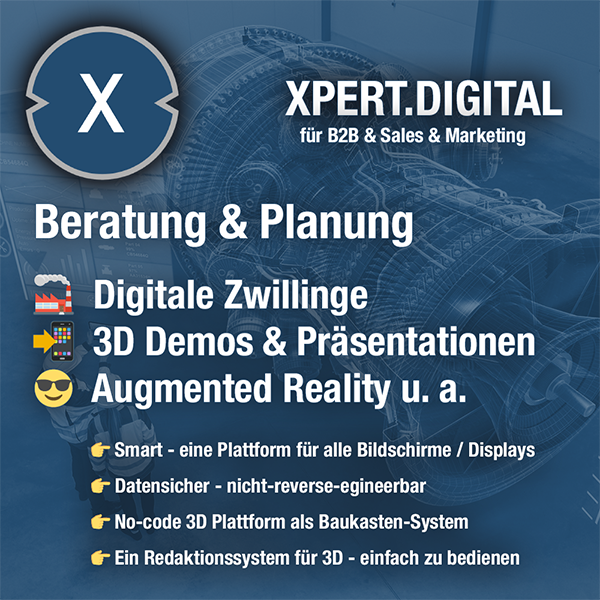
We are there for you - advice - planning - implementation - project management
Xpert.Digital - Pioneer Business Development
Smart Glasses & KI - XR/AR/VR/MR industry expert
Consumer metaverse or meta -verse in general
If you have any questions, further information and advice, please feel free to contact me at any time.
I would be happy to serve as your personal advisor.
You can contact me by filling out the contact form below or simply call me on +49 89 89 674 804 (Munich) .
I'm looking forward to our joint project.
Xpert.Digital - Konrad Wolfenstein
Xpert.Digital is a hub for industry with a focus on digitalization, mechanical engineering, logistics/intralogistics and photovoltaics.
With our 360° business development solution, we support well-known companies from new business to after sales.
Market intelligence, smarketing, marketing automation, content development, PR, mail campaigns, personalized social media and lead nurturing are part of our digital tools.
You can find out more at: www.xpert.digital - www.xpert.solar - www.xpert.plus



